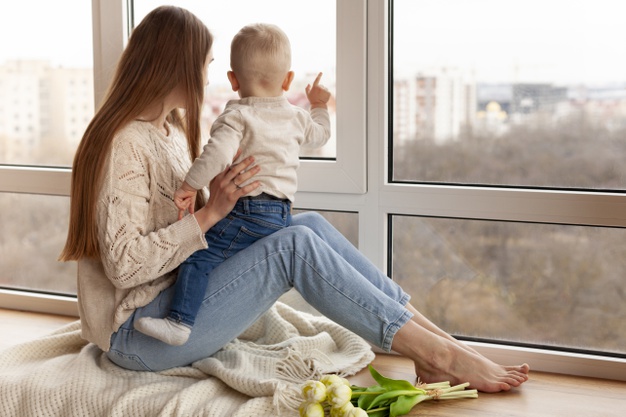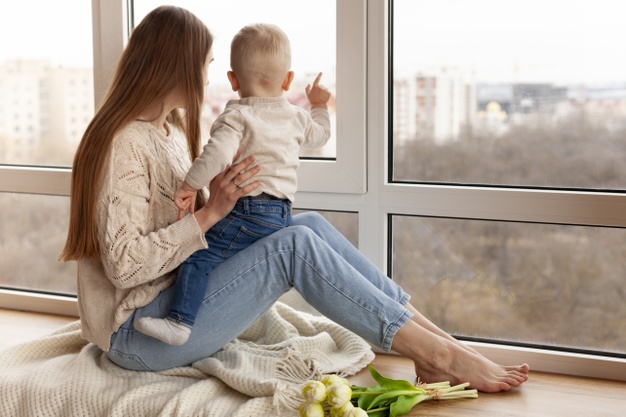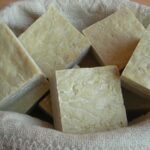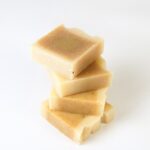You are planning to change one or more windows in your home. You will thus considerably improve the thermal and acoustic comfort of your home. But not only that. Replacing windows can also affect the ventilation, brightness, safety, and atmosphere of the house. As you can understand from the topic of the window in 9 questions, you will learn everything you need to know before changing your windows in this article.
Which material should I choose? Should I choose double or triple glazing? Does changing windows affect ventilation? Which installer do you prefer? All the answers below…

1. PVC, aluminium, wood : what material for my new windows?
2. What about Mixed joinery for windows?
3. French-style opening, sliding, tilt-and-turn: what type of window opening to choose?
4. Which window glazing should you choose?
5. Should I opt for triple glazing?
6. Does the change of window have an impact on ventilation?
7. Window replacement: what is an installation in renovation?
8. How do I choose my installer for my window change?
9. What do the coefficients Uw and Sw mean?
Is it time to replace your windows? Go for it without hesitation. The developments are numerous, rapid, and there is no reason to deprive yourself of the comfort and savings new windows provide especially since design is now a priority for manufacturers, whatever the material.
1. PVC, aluminium, wood : what material for my new windows?
Each material has advantages and some disadvantages. You will make a choice according to your needs, the style of the house, your budget, and possible constraints.
PVC is insulating, easy to live with, maintenance-free, excellent value for money, rot-proof and robust, perfect for seaside environments. It can be colored or take on a wood look. The aluminium is thin, lets in a maximum of light, is suitable for large windows, and its range of colors is almost unlimited. It is well suited to contemporary projects, even if they involve the rehabilitation of old buildings. Wood is a natural material. Insulating by nature, it achieves excellent levels of performance. It is warm and authentic, but it needs to be maintained.
2. What about Mixed joinery for windows?
Mixed joinery is made of two materials and combines the advantages of both.
An aluminium/wood window (aluminium on the outside) has the insulating qualities of wood without the maintenance constraints. An aluminium/pvc model is more insulating and less expensive than a 100% aluminium model. Don’t hesitate to take an interest in these combination products, you will not be disappointed.
3. French-style opening, sliding, tilt-and-turn: what type of window opening to choose?
The French window is the most common. It is composed of one or two leaves (opening), held by hinges. It is attractive to couple French-style opening and tilt-and-turn opening. In tilt and turn mode, the window tilts inwards and opens from the top. A considerable advantage in a room: you can sleep with the window open without fear of intrusion.
There are also sliding windows (one-panel slides behind the other). There are no opening, and this is a considerable advantage in kitchens, for windows above sinks.
4. Which window glazing should you choose?
The double glazing is a base. You can then move up the range and choose glazing that meets your specific needs. If your bay faces south and you are suffocating in the summer, opt for solar control glazing. It blocks up to 80% of the sun’s heat. If you live in a boisterous area, choose acoustic double glazing (two glasses of different thicknesses, one of which is laminated).
To effectively solve a problem (noise, security, etc.) do not rely solely on the glazing but the overall performance of the window, including its installation method.
5. Should I opt for triple glazing?
Yes, in some cases: if your bay faces due north, if you live in the north-east or an area with a high climatic amplitude if your house is new and you have a low-energy project.
However, don’t overpay for your triple glazing. For the same quality, the extra cost compared to double glazing should not exceed 20%.
6. Does the change of window have an impact on ventilation?
When you change the windows in an old house, you disrupt the ventilation that was “by default” sealing. It is, therefore, necessary to ensure that the air is appropriately renewed. It is often recommended to install, at the same time, as the windows, a Continuous Mandatory Ventilation (CMV) with continuous operation, in one of the humid rooms of the house, for example, the kitchen.
The air intake is then organized through the dry rooms (living room, bedroom) by placing ventilation grilles on the high window transoms. This air will come out of humid rooms, thanks to the CMV.
7. Window replacement: what is an installation in renovation?
There are two ways to install your new windows: installation in renovation or total removal. When installing in a renovation, we keep the frame of your old window (the fixed part sealed to the wall), if it is in good condition, and we screw the frame of the new window on top of it. It’s a quick and simple installation method. The construction site is completed in a few hours, it respects the wall, there is almost no dust. On the other hand, you lose a little light (because the opening is reduced) and performance, especially in sound insulation.
Total removal consists of completely removing your old window, including the frame. We clean up and put it in the new window. You will enjoy the full performance of your new joinery, without loss of light.
8. How do I choose my installer for my window change?
Professional installation is essential to get the most out of your equipment and save energy. If you opt for total removal, be particularly careful when choosing the installer. He must be qualified, experienced, and carry out the installation with his teams (no subcontracting).
Consult several professionals and study their offers. Choose a local company, based near you and certified. If in doubt, check the company’s legal information sites. Finally, avoid professionals with a very aggressive sales approach or who charge significantly lower prices than their colleagues.
9. What do the coefficients Uw and Sw mean?
These coefficients reflect the thermal performance of the window. To be eligible for public support, the window must reach a level of : Uw ≤ 1.3 W/m².K and Sw ≥ 0.3 or Uw ≤ 1.7 W/m².K and Sw ≥ 0.36.
Uw is the thermal insulation coefficient of the window, the lower it is, the better the insulation is. Sw is the solar factor. It refers to the window’s ability to let in solar gain.
As with any renovation project, if you are considering changing your windows, start by defining your needs: thermal, acoustic, safety, security, brightness and your budget. The new windows must harmonize with the facade and style of the house. Inside, they must blend in with the atmosphere.











